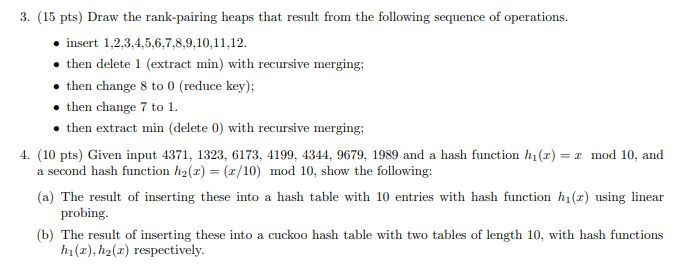Answered step by step
Verified Expert Solution
Question
1 Approved Answer
3. (15 pts) Draw the rank-pairing heaps that result from the following sequence of operations. .insert 1,2,3,4,5,6,7,8,9,10,11,12. then delete 1 (extract min) with recursive merging;

Step by Step Solution
There are 3 Steps involved in it
Step: 1

Get Instant Access to Expert-Tailored Solutions
See step-by-step solutions with expert insights and AI powered tools for academic success
Step: 2

Step: 3

Ace Your Homework with AI
Get the answers you need in no time with our AI-driven, step-by-step assistance
Get Started


